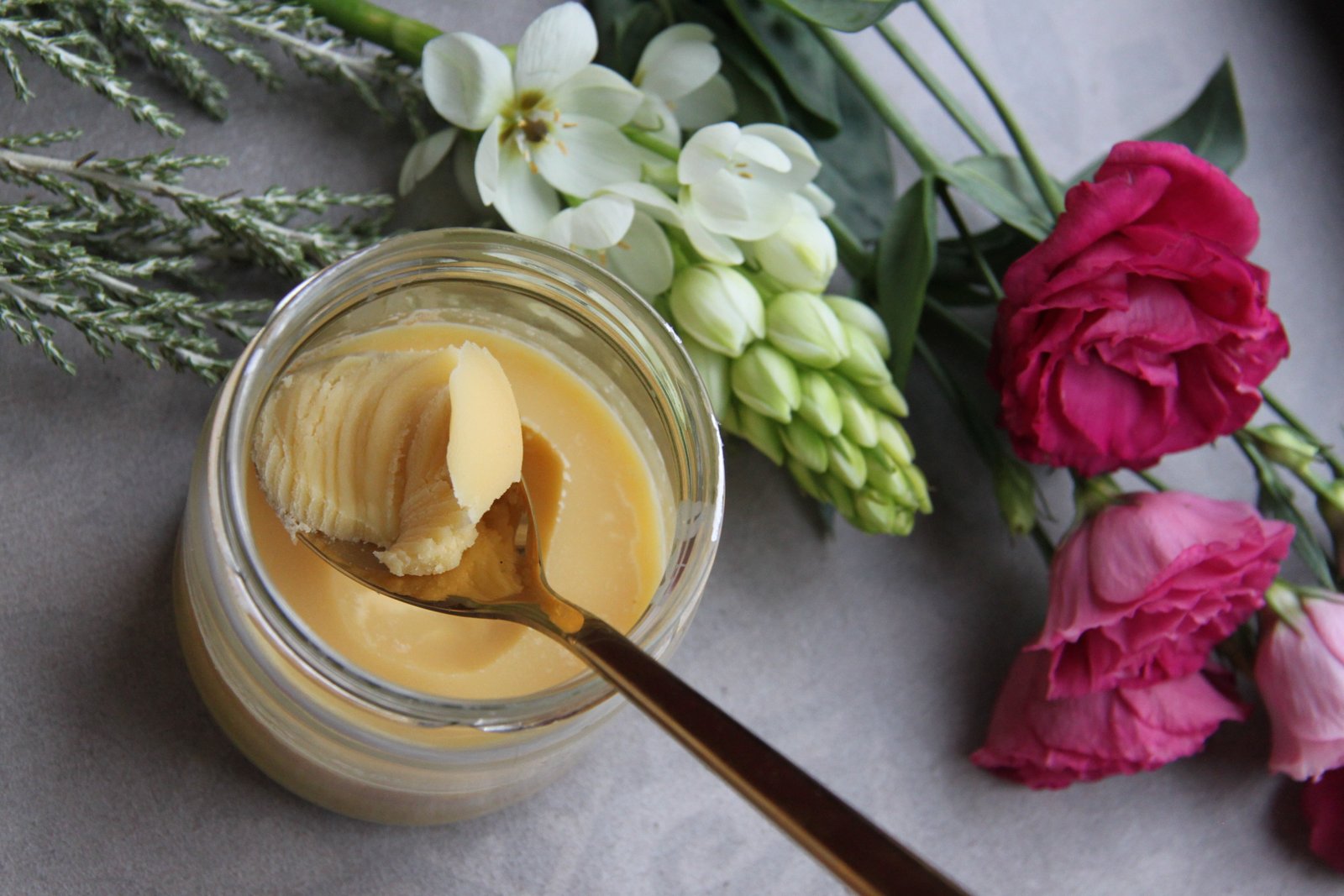Ghee, a form of clarified butter, has been a staple in Indian cooking for centuries. Known for its rich flavor and high smoke point, it’s gaining popularity in culinary circles worldwide. But there’s another less-discussed aspect of ghee that might surprise you: its potential benefits for acne-prone skin. This article explores why cooking with ghee could be a safe, and even beneficial, choice for those battling acne.
The Composition of Ghee
Ghee is essentially butter that has been simmered to remove water and milk solids. What’s left is a concentration of fats, mainly saturated fats, but it’s also rich in butyric acid and vitamins A, D, E, and K. These nutrients are known for their health benefits, including skin health.
Why Ghee Could Be Safe for Acne-Prone Skin
- Low Dairy Content: Since ghee is free of milk solids, it’s low in lactose and casein, which are often linked to acne flare-ups. This makes ghee a safer option for those who are lactose intolerant or sensitive to dairy products.
- Anti-inflammatory Properties: Ghee contains butyric acid, a short-chain fatty acid known for its anti-inflammatory properties. Inflammation is a key factor in acne development, so using an anti-inflammatory cooking medium like ghee could potentially reduce acne flare-ups.
- Rich in Antioxidants: The vitamins A, D, E, and K in ghee are potent antioxidants. Oxidative stress is another factor that can exacerbate acne. By combating free radicals, these antioxidants can help maintain skin health.
Cooking with Ghee
Ghee’s high smoke point (about 482°F or 250°C) makes it ideal for frying and sautéing without breaking down into harmful free radicals. Its rich, nutty flavor enhances the taste of dishes. When cooking for skin health, pair ghee with acne-friendly ingredients like leafy greens, lean proteins, and whole grains.
Precautions
While ghee may be beneficial for acne-prone skin, it’s important to remember that dietary changes alone might not be sufficient to combat acne. Personal skin type and other health factors play a significant role. To dig deeper into what could be triggering breakouts, check out our free course.
Conclusion
Ghee’s unique properties make it a potentially safe and beneficial cooking medium for those with acne-prone skin. Its low dairy content, anti-inflammatory and antioxidant properties, and non-comedogenic nature are promising for those seeking dietary ways to manage acne. As with any dietary change, it’s important to monitor your skin’s response and consult with your healthcare professional as needed.
A Prayer for My Readers
Heavenly Father, the Great Healer,
In Your infinite wisdom, You have created a world abundant with nourishing foods, each with the power to heal and sustain our bodies. As we seek healing from skin afflictions like acne, we turn to You and the bounty You have provided. Help us in selecting foods that promote skin health, rich in the nutrients and vitamins that You have designed to nurture and restore. May our eating habits reflect a balance and moderation that is pleasing to You, remembering that “every good and perfect gift is from above” (James 1:17). In this journey of healing and nourishment, grant us patience and perseverance, trusting in Your provision.
We also pray for Your healing touch upon our skin, knowing that You care for every aspect of our well-being. In moments of frustration or self-consciousness, remind us that we are made in Your image and are beautiful in Your sight. May our struggles lead us closer to You, finding solace in Your promises and strength in Your word. As You provided manna from heaven to the Israelites, provide us now with the wisdom to choose foods that serve as medicine and healing for our bodies. In our pursuit of physical healing, let us not forget the importance of spiritual nourishment, feeding on Your Word and Your faithfulness.
In Jesus’ name, we pray, amen.
Photo by Megumi Nachev on Unsplash

Leave a Reply